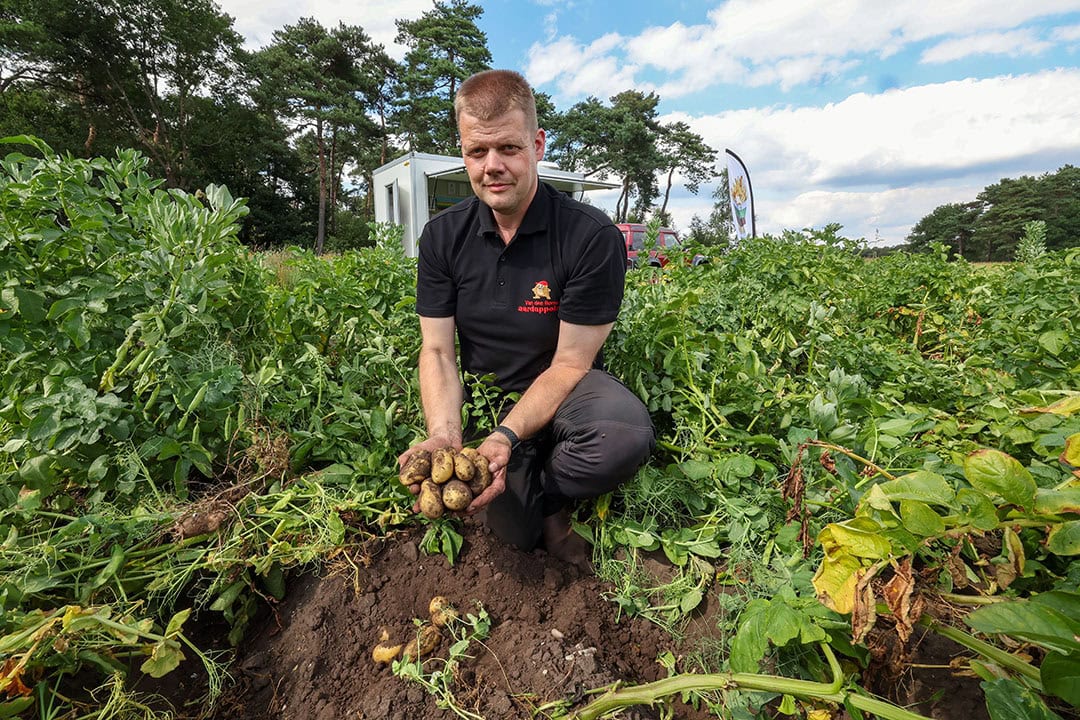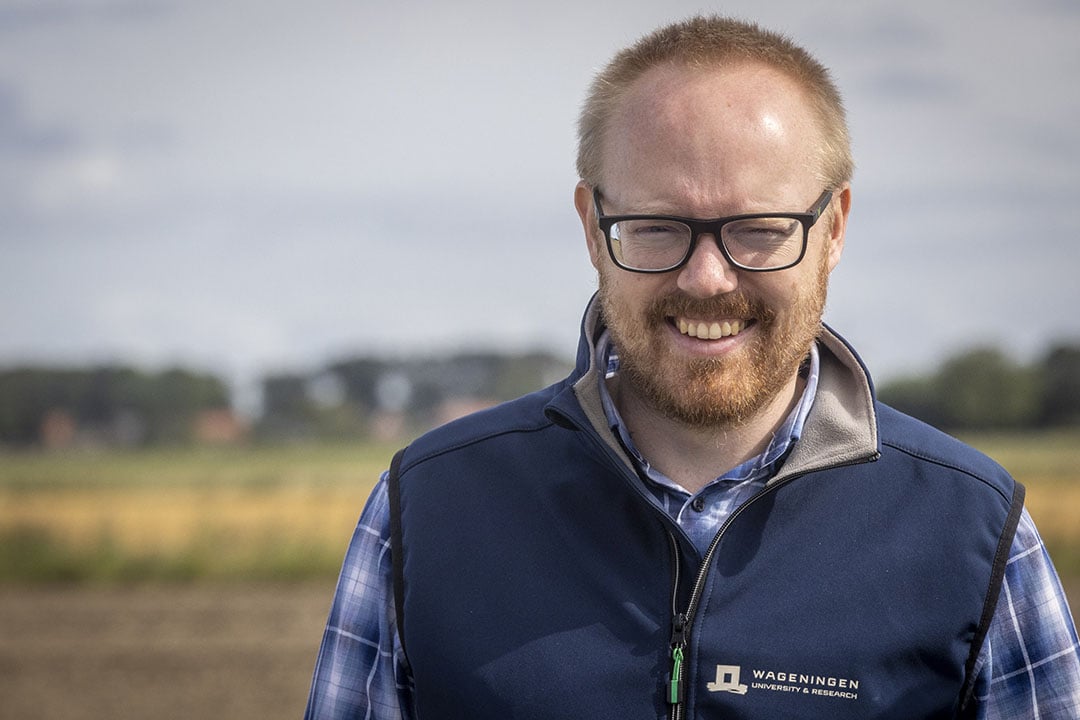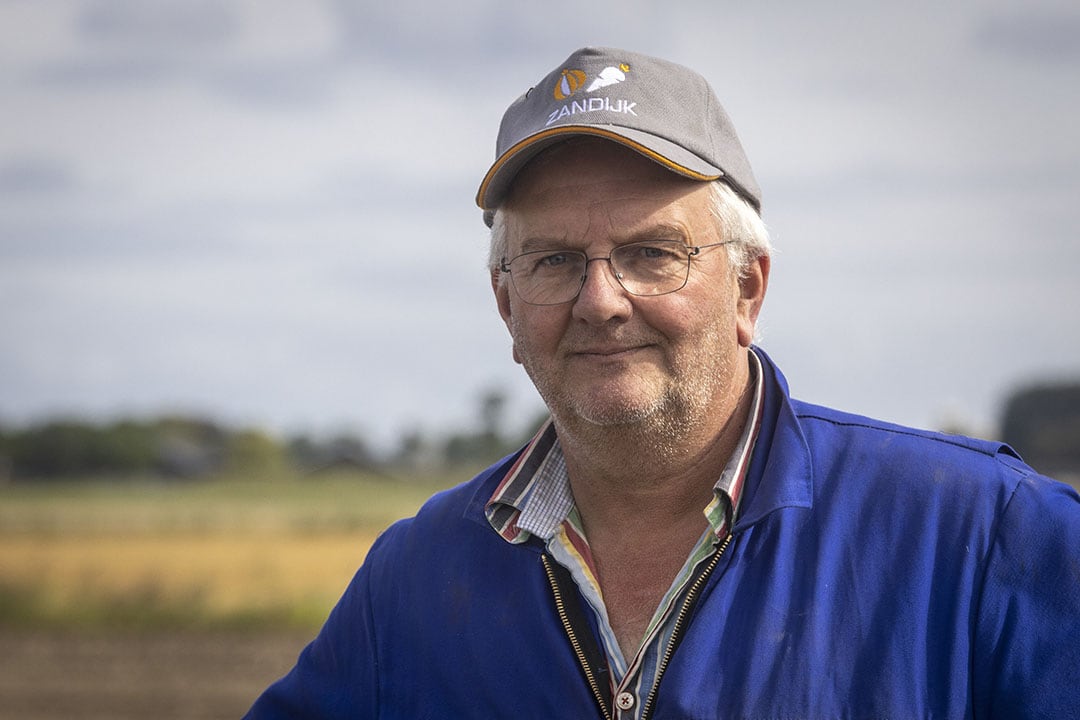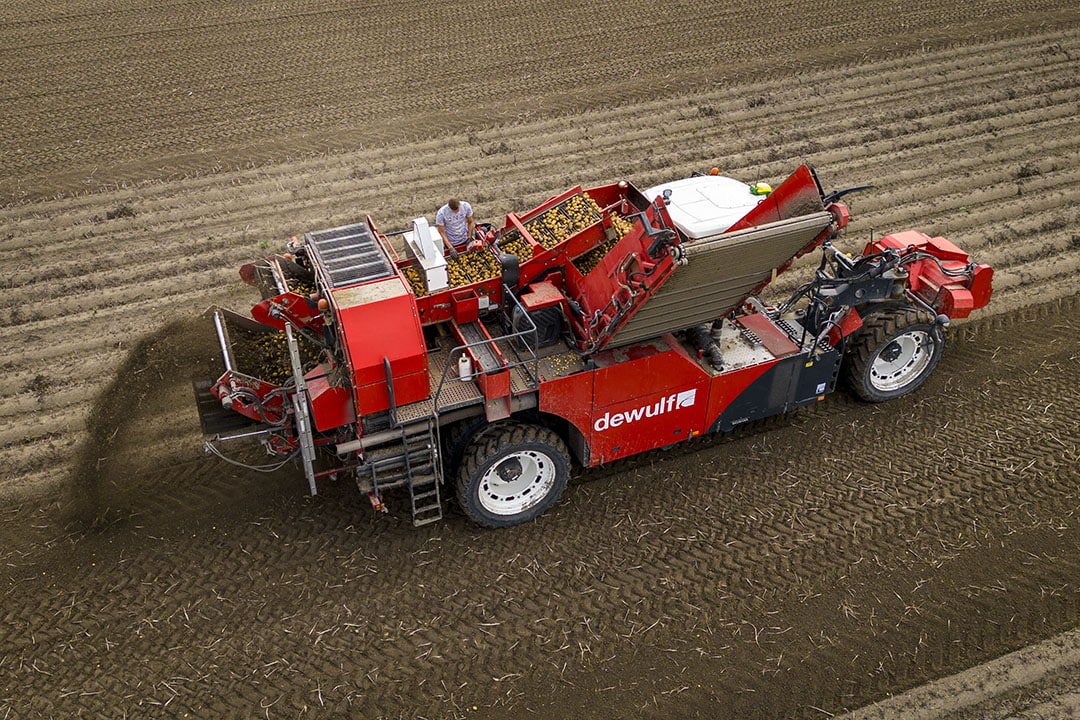Variable planting: simple technique, difficult to define results

Variable planting based on variation in the soil is simple. Achieving results with it is something else. There are many variable and unpredictable growth factors that overshadow the effect of planting distance.
Varying the planting distance to increase yield is, in principle, fairly simple. Where the soil is most productive, make the planting distance a little closer; where growing conditions are less favorable, place the plants a little further apart. See here the recipe to get the most and largest possible chip potatoes from every part of your plot (in seed potato cultivation, the largest possible number of potatoes in the most expensive sizes and in starch potato cultivation, the highest possible starch yield). In other words, with variable planting distance on the way to the best use of what your plots have to offer in terms of growth potential. How beautiful is that! The soil variation in plots can be clearly mapped out, and there are also planting machines that can plant variably.
VRA in precision agriculture
Responding to variation in the soil or in the crop is an important theme in precision agriculture. We are talking about VRA, variable rate application; the right dosage for every spot in a field. The more colorful the plots, the more variation in potential, the more you can gain with VRA. In addition to varying the planting distance to improve potato yield, basic fertilization (based on soil differences), of fungicides are used against phytophthora (based on infection probabilities and weather data) can also be varied based on plot variation. Another option for variable planting is, for example, to plant or sow more widely when there is a lot of shade, so that individual plants receive more light and thus grow to their full potential.
Text continues below picture

Green strip more interesting than variable planting
Dutch arable farmer Jacob van den Borne: “More light produces more yield, so closer planting has an effect. No discussion about that. On the other hand, we have gained a lot of experience with variable planting in strips with shade, but we have stopped doing that. What you see is that if you plant more widely in shaded areas, you save seed potatoes and get a coarser sorting, but also that the underwater weight remains behind. Then you still don’t have a uniform crop.”
Shadow maps can be found at, for example, Dacom or the Belgian WatchITgrow. The degree of shade is indicated step by step between 5 and 30 meters. The height of the adjacent afforestation counts, but also the location. Tall trees on the south side of a plot have much more effect than trees on the north side.
There is a method, but no traceable result yet
To remain variable in full-field planting, it turns out not to be a piece of cake. The way of working may have been reasonably crystallized, but traceable results cannot yet be distilled from it. The variation within plots can now be clearly visualized through soil scans that show variation in soil and/or organic matter, satellite images that show variation in moisture in bare soil, or variation within the plot of biomass in previous crops. height maps and possibly yield maps. If used correctly, the (combinations of) the different techniques result in an image of the soil potential of each part within a plot, which the arable farmer roughly recognizes. But a lot more precise. Creating a task map to control the planting machine based on the soil map is also feasible in the near future. Or have it done. Supplier Van Iperen, among others, does this for customers. It is then a matter of loading the task card into the planting machine with a USB stick and the variable planting can begin.
Expert Johan Booij of Wageningen University & Research sees variable planting for a better cultivation yield as a dollop of whipped cream for when the rest of the cultivation measures are already in good order. He points out that many growers can take improvement steps earlier by varying the planting distance not within plots, but between plots.
Text continues below picture

What planting distance in which location?
That’s the easy part, admits specialist Johan Booij of Wageningen University and Research (WUR), stationed at the WUR Valthermond experimental farm in The Netherlands. In addition to guiding participant Anselm Claassen in Vierhuizen on the clay in the north within The National Fieldlab for Precision Farming (NPPL), he takes a broader view of variable planting.
More difficult than having the soil scanned and making a task map is determining which planting distance should be in which location. Take starch potato cultivation in the Peat Colonies, for example. Booij: ‘You want to focus on starch yield, the combination of the yield in tons and the starch content. You often see a low weight with a high starch content on the sand heads and the other way around in the humus valleys. By using variable planting you hope to be able to respond to this, but you often see that one levels out the other. In 2020 and 2021 we set up a demo at the experimental farm in Valthermond where we compared current practice cultivation with a stack of variable applications such as VRA fertilization, planting and leaf killing.
No difference
Result of the comparison: no difference in yield level between one approach and the other. Neither in kilogram yield, nor in starch. In both situations and years a yield of approximately 11 tons of starch per hectare. While we want to get to 15 tons. It is striking that the yield maps (tonnes) clearly show the effect of differences in pre-crop or soil differences. So the question of how we should respond to that soil variation with precision agricultural techniques is still unanswered.
Jan Jaap Roseboom from supplier Van Iperen, who helps growers with location-specific variable planting based on soil potential maps, has a different view. “In the cultivation of consumption and seed potatoes, you aim for a more even batch and sorting. In addition, we have seen a higher yield and better quality over the past six years as a result of variable planting.”
One year is not the same as the next
Booij has included a scheme that puts an end to the idea that there is a linear and predictable relationship between planting distance and yield. The scheme applies to seed potatoes, but the factors also influence the yield of starch and French fries potatoes. The number of tubers and the sorting also depends on the number of sprouts and therefore stems per plant.
Booij: ‘One year is not the same as the next. Plants from a very hot, stressful year perform differently in the offspring than plants that have grown in a very balanced way. Harvesting damage and storage also play a role, whether or not ethylene… And the pre-treatment. This late spring, for example, many seed potatoes went into the ground physiologically older than normal.
There’s so much like that. Nematodes. Race. The moisture supply of the tuber, How fine could the seed bed be made on the clay and how good is the connection with the tuber? What is the moisture supply during tuber formation? How many tubers are produced and how many of them continue to grow large? What is the status (location-specific) of the nematode population on plots?’ In order not to be completely in the dark about the germination capacity of the seed potatoes, germination tests can be carried out.
Text continues below picture

Natural conditions are different
It also applies that a plant does not always behave the same under the controlled conditions of the germination test as under the discipline of natural conditions in the field. In short: in open ground cultivation there are many unpredictable growth factors that can be so large and so influential that the precision effect of variable planting can be dwarfed.
“The lesson”, says Johan Booij, “What I have learned from starch cultivation in recent years is that it often turns out afterwards that the number of desired stems has not been achieved and therefore should actually have been planted more closely to achieve that desired number. In addition, in tests conducted by Anselm Claassen with seed potatoes, closer planting in itself appears to lead to greater (financial) returns.”
Roseboom van Van Iperen: ‘There are many variables, I completely agree. But steering based on stem number is a good basis that you can use every year, regardless of the other factors. We also see a great similarity with practice in germination tests. This year we have an extensive test on this. Focus on things you can manage and don’t make it too complex, as that won’t help the growers.’
Step forward with visual yield measurement
Dutch farmer Anselm Claassen in Vierhuizen has been looking at the possibilities of variable fertilization and variable haulm killing since 2002. In recent years also with variable planting to work towards as many tubers as possible in the best paid sizes. Last fall, a major step forward was taken. The company harvested with a harvester that, in addition to weighing cells, was also equipped with a prototype for visual yield determination. Everything that passes by on the reading belt is photographed with a camera. The images are stored on a laptop in the cabin. In the Precision Agriculture 4.0 project, where visual yield determination is used, the data is converted into yield maps at WUR. “Per square meter”, says Booij from WUR, “it indicates exactly what has been harvested: the precise number of tubers. Total, but also per poter size. The algorithm that processes the images recognizes the potatoes and leaves out clods.”
Text continues below picture

Check moisture supply
Claassen is quite fanatical in his search for opportunities to optimize his seed potato cultivation. He uses the services that supplier Van Iperen provides him in this area. Last year he also embraced the trial at his company with visual yield measurement. “It is precisely that net yield per size that is important. That is what this camera system adds to yield determination with weighing rollers under the reading belt. Precise yield measurement is a way to gain insight into the effect of precision measures.”
At the same time, Claassen warns against drawing conclusions that are too easy. “The sorting at harvest does not only depend on the planting distance. You would like that, but that is not the case. You could say that I have no control over what exactly grows unless I also have control over the moisture supply. Unfortunately, irrigation is not possible here.” Claassen sees the value of first collecting as much data as possible. Not to immediately benefit from it the next year. That is a matter of years and it concerns complex connections that may emerge. It does not stop him from continuing on the path he has chosen.



